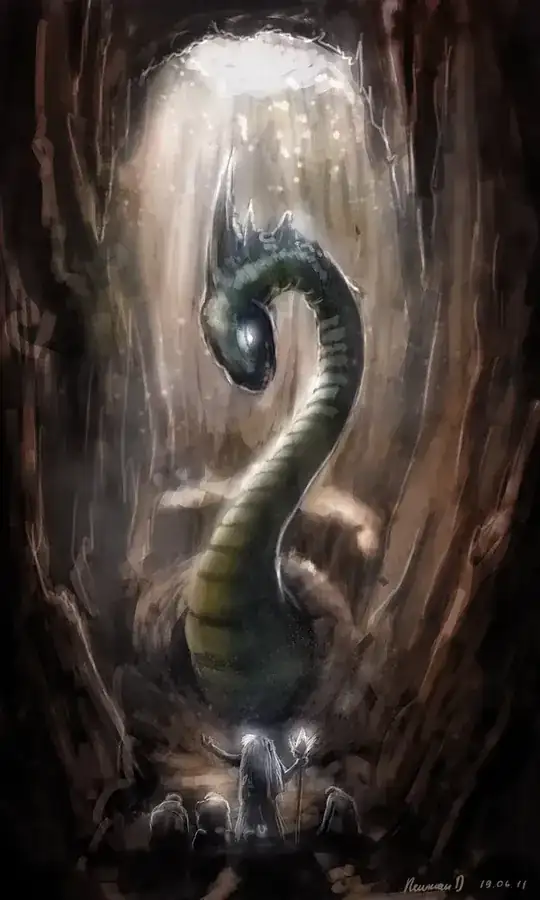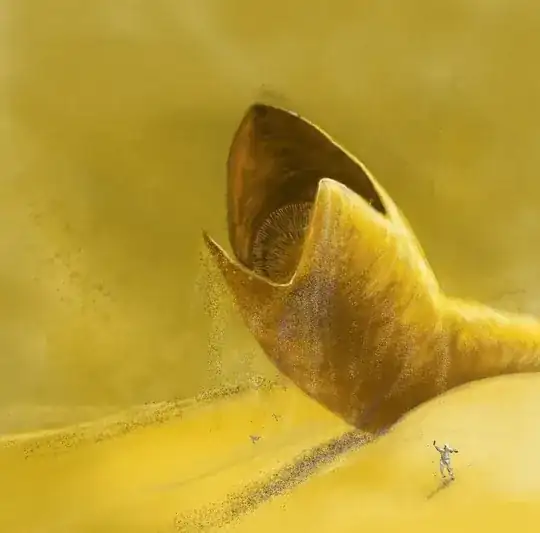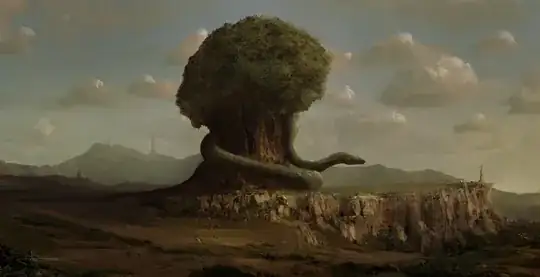The Boundary Ouroboros
The good news is that snakes have less of an issue with the square-cube law than other animals. Since they lie against the ground, as long as any segment of the body can support itself, the total length of the snake can be basically whatever you want. This doesn't tend to occur in nature because extra length requires more food to grow and move but doesn't convey any real benefit, but since your story is a fantasy I will presume that the giant snake is created, not evolved, and therefore doesn't need a plausible evolutionary history explaining its size.
However, this means that your snake is not going to look like an enlarged version of existing snakes - it is going to be very long, and very thin relative to its length. It will not pursue prey, as moving the whole body will be extremely costly - no more costly than moving a bunch of snakes positioned end-to-end, but it only has one mouth, and therefore cannot waste energy moving its whole body to chase prey it might not catch.
I would propose the following lifestyle:
Your snake is only a few feet in diameter (big, but not BIG big), but extremely, extremely long - we're talking one to several kilometers in length. It lives in lush areas with many large animals, and loops around its territory ouroboros-style, making its body a boundary. It winds back and forth as it encircles the area, leaving some slack in every part of its body. Its scales are rough and enable it to camouflage. When a large enough animal crosses any part of its body, it quickly throws the nearest "loop" around it, then constricts it to death. It then moves the loop along its body to bring the carcass around toward the head where it can be eaten, or moves its head toward the captured prey. By lying in a loop, it minimizes the average distance between the head and any given part of its body.
However, it should sometimes allow animals to cross over its body, particularly if they are small, moving toward the center of the ring, and are on the part of the body far away from the head. This is because the farther away from the head the animal is caught, the more energy it will take to actually bring them to the mouth (or bring the mouth to them). It will also prevent the prey population within the ring from being depleted, allow younger animals into the ring to grow up and be consumed later, and prevents animals from simply learning to avoid the snake's body entirely. Small animals may even learn to cross over the snake's body when being pursued by predators - the snake will allow the small prey to cross but may capture the larger predator.
Any prey that comes near the head can be caught and constricted in the manner of a normal big snake. It will not be venomous - venomous snakes bite prey and then pursue it slowly until it dies, and pursuing prey long distances is one thing this snake does not want to do.
When it is ready to move to a new location, or when all the animals inside the ring have learned not to cross its body, it will "harvest" the population within the ring by slowly spiraling its head towards the middle, tightening the loop and capturing any prey that crosses the boundary as it does so.



